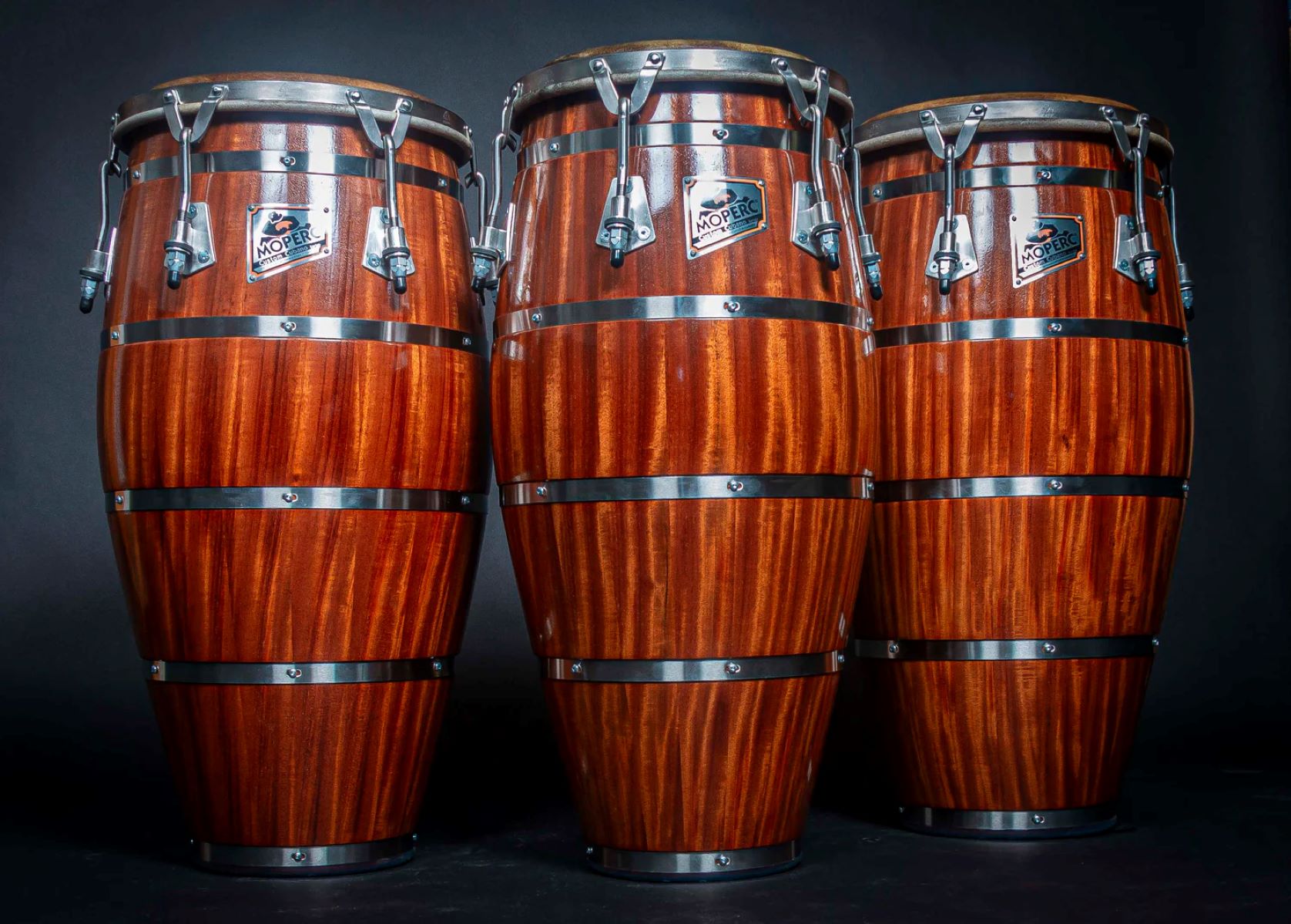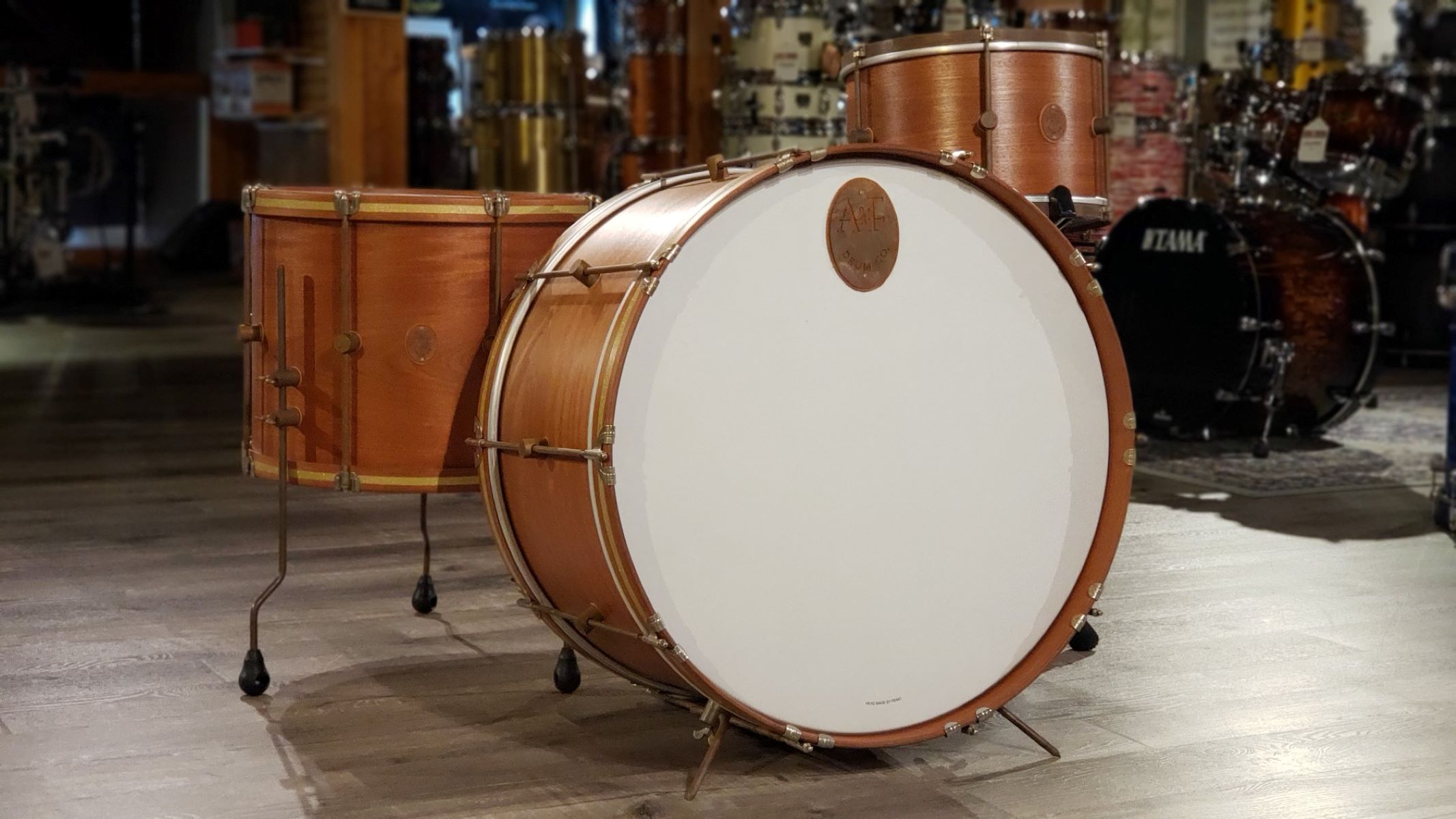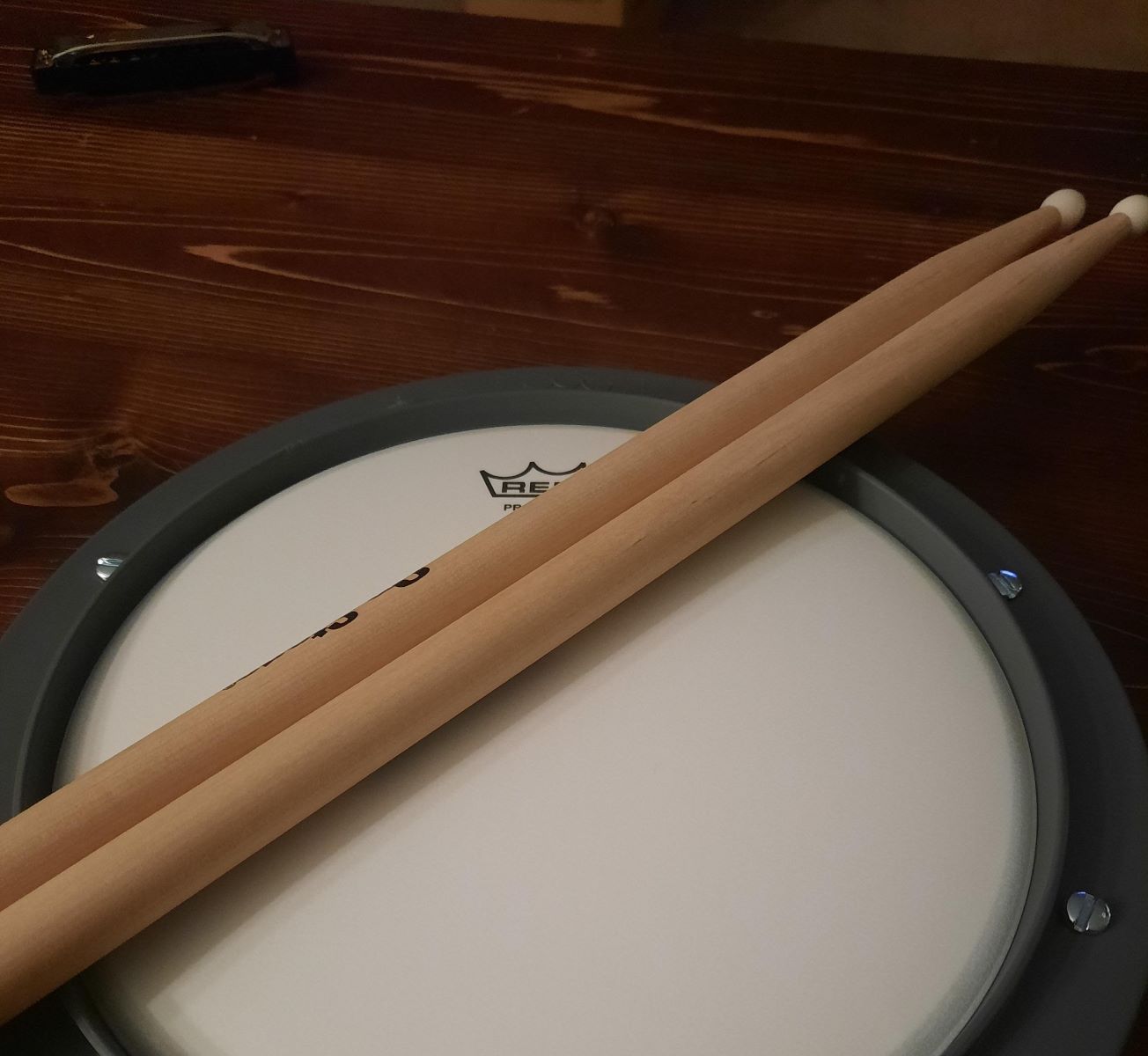Home>Instruments>Drums>What Is A Rudiment In Drums


Drums
What Is A Rudiment In Drums
Published: February 8, 2024
Learn about the importance of rudiments in drumming and how they can enhance your drumming skills. Discover the essential techniques and practice tips. Unlock the secrets of mastering drum rudiments.
(Many of the links in this article redirect to a specific reviewed product. Your purchase of these products through affiliate links helps to generate commission for AudioLover.com, at no extra cost. Learn more)
Table of Contents
Introduction
Hey there, fellow drum enthusiasts! If you've ever marveled at the jaw-dropping skills of a drummer as their sticks effortlessly dance across the drumheads, then you've witnessed the captivating result of dedicated practice and mastery of drum rudiments. In this article, we'll embark on an exhilarating rhythmic journey to uncover the essence of drum rudiments, their historical significance, and their pivotal role in shaping the art of drumming.
The world of drumming is a fascinating realm where rhythm, precision, and creativity converge to produce mesmerizing beats and heart-pounding rhythms. At the core of this rhythmic tapestry lie the rudiments, the fundamental building blocks that underpin the art of drumming. Whether you're a seasoned drummer or a curious novice, understanding the essence of rudiments is essential for unraveling the captivating intricacies of drumming.
So, fasten your seatbelts as we delve into the captivating world of drum rudiments, unearthing their historical roots, unraveling their importance, and exploring the exhilarating journey of mastering these rhythmic gems. Whether you're drawn to the thunderous resonance of the bass drum, the crisp snap of the snare, or the shimmering tones of the cymbals, the rhythmic language of drum rudiments forms the heartbeat of every percussive masterpiece. So, let's embark on this rhythmic odyssey and unravel the captivating allure of drum rudiments!
Definition of Rudiment
Before we dive deeper into the world of drum rudiments, let’s unravel the essence of these fundamental elements. In the realm of drumming, a rudiment refers to a basic pattern or exercise that serves as the foundation for developing drumming technique and proficiency. These fundamental patterns form the essential vocabulary of drumming, allowing drummers to articulate a diverse array of rhythms and embellishments.
Drum rudiments encompass a wide spectrum of sticking patterns, rolls, flams, and paradiddles, each serving as a building block for crafting intricate and expressive rhythms. From the thunderous resonance of the bass drum to the crisp articulation of the snare, rudiments provide the framework for mastering the art of percussive expression.
At the core of rudiments lies the art of stick control and coordination, enabling drummers to navigate the drum set with finesse and precision. Whether it’s executing lightning-fast single strokes, crafting dynamic accents, or seamlessly transitioning between different drumming elements, the mastery of rudiments forms the bedrock of a drummer’s technical prowess.
As we unravel the captivating world of drum rudiments, it’s essential to recognize their role as the rhythmic language of drumming, empowering drummers to communicate and express themselves through the mesmerizing tapestry of beats and rhythms. With this foundational understanding of rudiments, we’re poised to embark on an exhilarating rhythmic journey, delving into their historical significance and unraveling their pivotal role in shaping the art of drumming.
History of Rudiments in Drumming
The captivating history of drum rudiments traces its origins to ancient civilizations, where percussive instruments served as vital elements of cultural and ceremonial expression. From the mesmerizing rhythms of African djembe ensembles to the thunderous beats of military drums, the evolution of rudiments is intertwined with the rich tapestry of human history.
One of the earliest documented instances of rudimental drumming can be found in the military traditions of ancient civilizations such as Egypt, Rome, and China. The rhythmic cadences and rudimentary patterns played a crucial role in military communication, signaling commands, and boosting the morale of troops on the battlefield. As civilizations expanded and interacted, the exchange of rhythmic traditions and drumming techniques laid the foundation for the global evolution of drum rudiments.
The 18th and 19th centuries witnessed a significant surge in the formalization of drum rudiments, particularly in the context of military drumming. It was during this era that influential figures such as Johann Gottfried Khler and Sanford A. Moeller played pivotal roles in codifying and documenting a comprehensive array of rudimental patterns and exercises. The emergence of drum manuals and instructional texts further facilitated the dissemination and standardization of rudimental drumming techniques.
Furthermore, the fusion of diverse musical traditions and the advent of jazz, blues, rock, and other genres propelled the evolution of rudiments beyond the confines of military and ceremonial drumming. Drummers began incorporating rudiments into improvisational styles, pushing the boundaries of rhythmic expression and technical virtuosity.
Today, the legacy of drum rudiments continues to thrive, permeating diverse musical genres and serving as the cornerstone of drumming education and performance. From the thunderous cadences of marching bands to the electrifying solos of contemporary drummers, the historical journey of rudiments has left an indelible imprint on the rhythmic landscape of music and continues to inspire drummers worldwide.
Importance of Rudiments in Drumming
The significance of drum rudiments in the realm of drumming transcends mere technical exercises; they form the bedrock of a drummer’s proficiency, creativity, and expressive prowess. Let’s unravel the multifaceted importance of rudiments in shaping the art of drumming.
Technical Proficiency: Drum rudiments serve as the fundamental building blocks for honing technical proficiency. By mastering rudimentary patterns, drummers develop dexterity, coordination, and precision in their stick control, enabling them to navigate the drum set with finesse and agility. Whether executing lightning-fast single strokes or crafting intricate rolls, rudiments lay the groundwork for technical mastery.
Rhythmic Versatility: Rudiments empower drummers to articulate a diverse array of rhythms, accents, and embellishments, enriching their rhythmic vocabulary. From dynamic paradiddles to expressive flams, the mastery of rudiments equips drummers with the tools to infuse their playing with captivating rhythmic diversity, enhancing their musical expression.
Creative Expression: Beyond their technical utility, rudiments fuel creative expression and innovation in drumming. Drummers leverage rudimentary patterns to craft dynamic fills, captivating solos, and intricate rhythmic textures, elevating their musical performances and compositions. Rudiments serve as the canvas upon which drummers paint their rhythmic artistry, fostering creativity and individuality.
Foundational Learning: For aspiring drummers, rudiments provide a structured pathway for learning and mastering the art of drumming. By embracing rudimentary exercises, beginners develop a strong foundation in rhythm, technique, and musicality, laying the groundwork for their musical journey. Rudiments form the essential scaffolding upon which drummers construct their skills and repertoire.
Performance Excellence: Whether in the context of live performances, studio recordings, or collaborative ensembles, the mastery of rudiments elevates a drummer’s performance excellence. The precision, control, and dynamism cultivated through rudimental practice enhance a drummer’s ability to deliver captivating and impactful performances, captivating audiences with their rhythmic prowess.
As we navigate the rhythmic landscape of drumming, the profound importance of rudiments becomes evident, underscoring their role as the heartbeat of percussive expression. From nurturing technical prowess to fostering creative innovation, rudiments stand as timeless pillars that enrich the art of drumming and inspire drummers to push the boundaries of rhythmic possibility.
Common Rudiments in Drumming
Within the expansive realm of drum rudiments, a diverse array of fundamental patterns and exercises form the essential vocabulary of drumming. These rudiments, ranging from foundational sticking patterns to intricate rolls and flams, enrich the rhythmic palette of drummers and serve as the building blocks for expressive and dynamic playing. Let’s explore some of the common rudiments that shape the rhythmic tapestry of drumming:
- Single Stroke Roll: The single stroke roll is a fundamental rudiment characterized by alternating single strokes, typically played at a consistent tempo. This rudiment forms the basis for developing hand speed, control, and endurance, serving as a cornerstone for building technical proficiency.
- Double Stroke Roll: The double stroke roll features consecutive double strokes with each hand, facilitating the development of rebound and wrist control. This rudiment enhances a drummer’s ability to execute rapid and fluid sticking patterns, adding versatility to their playing.
- Paradiddle: The paradiddle is a versatile rudiment that consists of four alternating strokes, typically played as ‘RLRR’ or ‘LRLL.’ This pattern fosters coordination between the hands and serves as a foundational element for crafting dynamic and syncopated rhythms.
- Flam: The flam rudiment involves a nuanced technique where one stick strikes the drum slightly ahead of the other, creating a distinct grace note effect. Flams add expressive accents and embellishments to drumming, infusing compositions with dynamic flair and texture.
- Drag Rudiments: Drag rudiments encompass a family of patterns characterized by the addition of grace notes before primary strokes, creating a smooth and nuanced articulation. These rudiments, including the single drag tap and double drag tap, contribute to the intricacy and finesse of drumming patterns.
These rudiments represent a mere fraction of the rich tapestry of drumming patterns and exercises that form the rhythmic lexicon of drummers. Whether it’s the thunderous resonance of the bass drum, the crisp articulation of the snare, or the shimmering tones of the cymbals, these rudiments infuse drumming with depth, dynamism, and expressive potential, shaping the art of percussive expression with their rhythmic allure.
How to Practice Rudiments
Mastering drum rudiments requires dedicated practice, focused discipline, and a structured approach to skill development. Whether you’re a beginner embarking on your rhythmic journey or a seasoned drummer aiming to refine your technique, the following strategies and techniques can enhance your rudimental practice sessions:
- Structured Routine: Establish a structured practice routine that allocates dedicated time for rudimental exercises. Consistency is key, so aim to practice rudiments regularly, gradually increasing the intensity and duration of your sessions as you progress.
- Metronome Mastery: Utilize a metronome to develop rhythmic precision and timing. Start at a comfortable tempo and gradually increase the speed as you build proficiency. The metronome serves as a valuable tool for honing rhythmic accuracy and maintaining consistent tempo during rudimental practice.
- Isolation and Integration: Isolate individual rudiments to focus on specific technical challenges, such as hand speed, control, and dynamics. Once you’ve honed the individual rudiments, integrate them into musical phrases and patterns, exploring their application within different musical contexts.
- Dynamic Control: Pay attention to dynamics and articulation while practicing rudiments. Experiment with varying degrees of volume, accents, and stick control to imbue your playing with expressive nuance and musicality. Rudiments offer a canvas for dynamic exploration, allowing you to infuse your playing with depth and character.
- Progressive Challenges: Gradually introduce progressive challenges to your rudimental practice, such as increasing tempo, incorporating complex rhythmic variations, and exploring different stickings. This approach fosters continuous growth and pushes the boundaries of your technical abilities.
- Application in Musical Contexts: Apply the rudiments you practice to musical pieces, drumming compositions, and improvisational sessions. Integrating rudiments into real-world musical contexts enhances their relevance and fosters a deeper understanding of their expressive potential.
By embracing these strategies and techniques, drummers can elevate their rudimental practice sessions, fostering technical mastery, rhythmic versatility, and expressive innovation. Whether you’re honing the precision of a paradiddle, perfecting the fluidity of a double stroke roll, or infusing your playing with the nuanced grace of flams, dedicated and focused practice is the gateway to unlocking the rhythmic treasures of drum rudiments.
Conclusion
As we draw the rhythmic curtain on our exploration of drum rudiments, we’ve embarked on a captivating odyssey through the historical, technical, and expressive dimensions of these fundamental elements. From their ancient origins to their contemporary relevance, drum rudiments stand as timeless pillars that enrich the art of drumming and inspire drummers to push the boundaries of rhythmic possibility.
The significance of rudiments transcends their role as technical exercises; they form the heartbeat of percussive expression, empowering drummers to communicate and express themselves through the mesmerizing tapestry of beats and rhythms. Whether it’s the thunderous resonance of the bass drum, the crisp articulation of the snare, or the shimmering tones of the cymbals, rudiments infuse drumming with depth, dynamism, and expressive potential, shaping the art of percussive expression with their rhythmic allure.
Aspiring drummers and seasoned percussionists alike embark on a rhythmic journey that celebrates the art of stick control, coordination, and creative expression. The structured practice of rudiments lays the foundation for technical proficiency, rhythmic versatility, and performance excellence, fostering a deep-rooted connection between drummers and their craft.
So, whether you’re honing the precision of a paradiddle, perfecting the fluidity of a double stroke roll, or infusing your playing with the nuanced grace of flams, the rhythmic treasures of drum rudiments await your exploration. Embrace the rhythmic language of rudiments, unleash your creative potential, and let the mesmerizing beats and rhythms of drumming resonate far and wide, captivating audiences and inspiring the next generation of drummers.
As we bid adieu to this rhythmic sojourn, let the pulse of drum rudiments reverberate in your heart, infusing your playing with passion, precision, and boundless rhythmic expression. The beat goes on, and the allure of drum rudiments continues to inspire drummers to craft percussive masterpieces that resonate across time and space.











